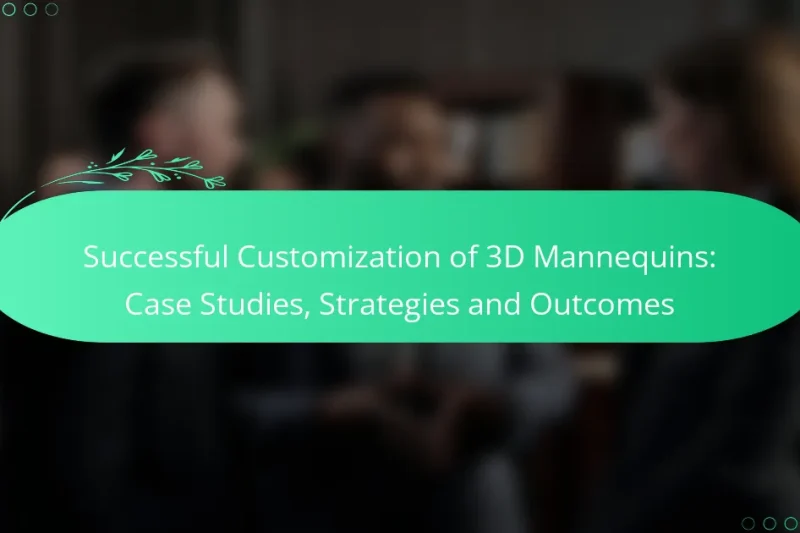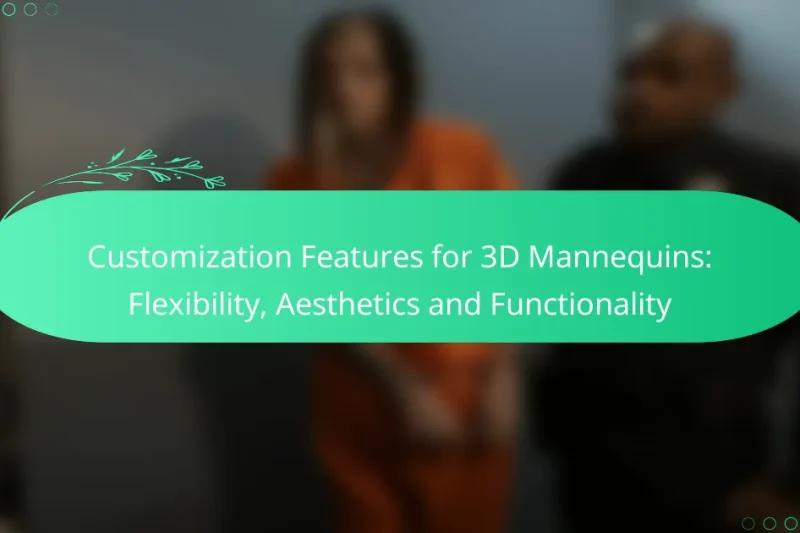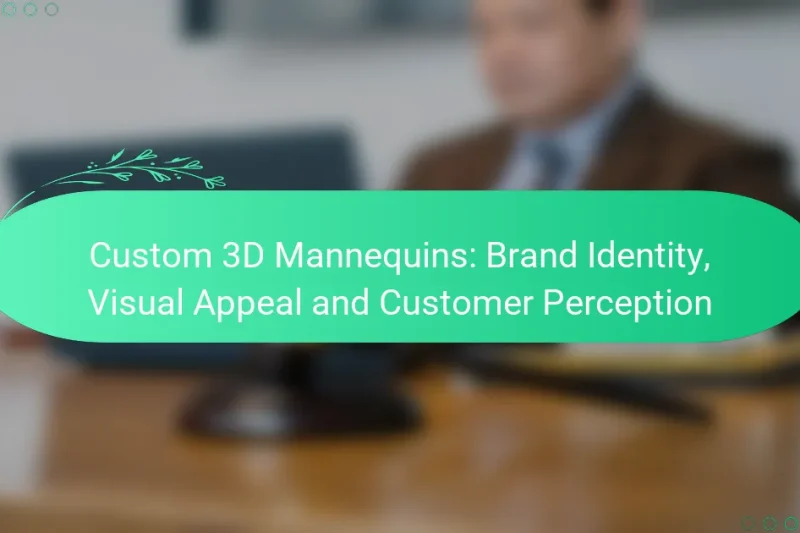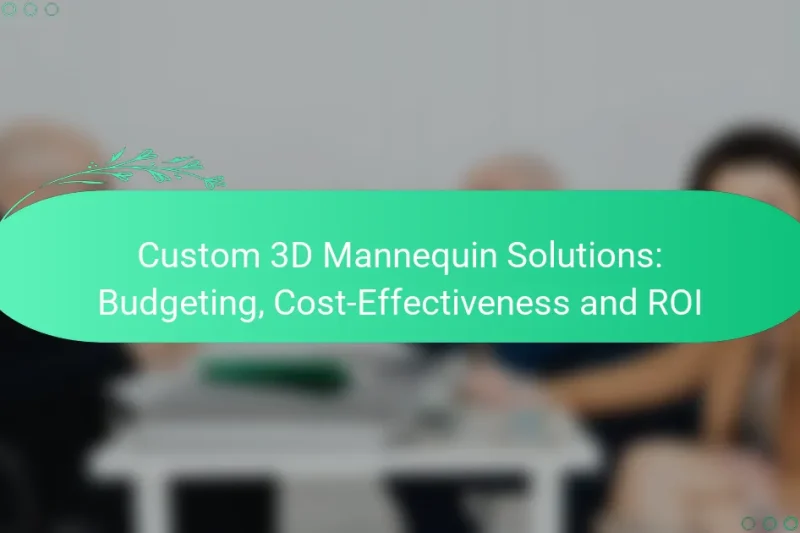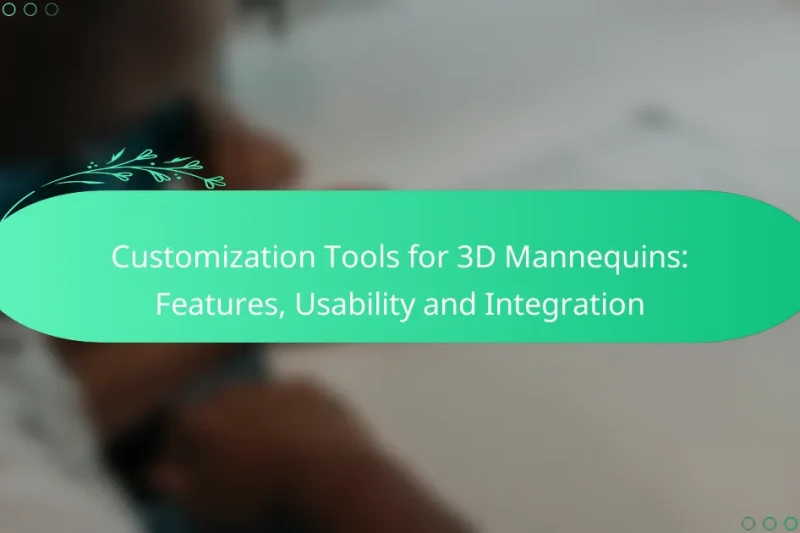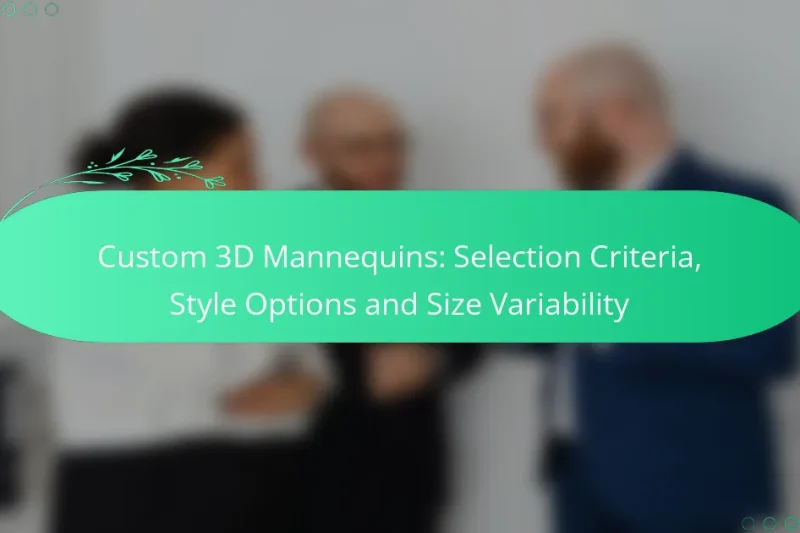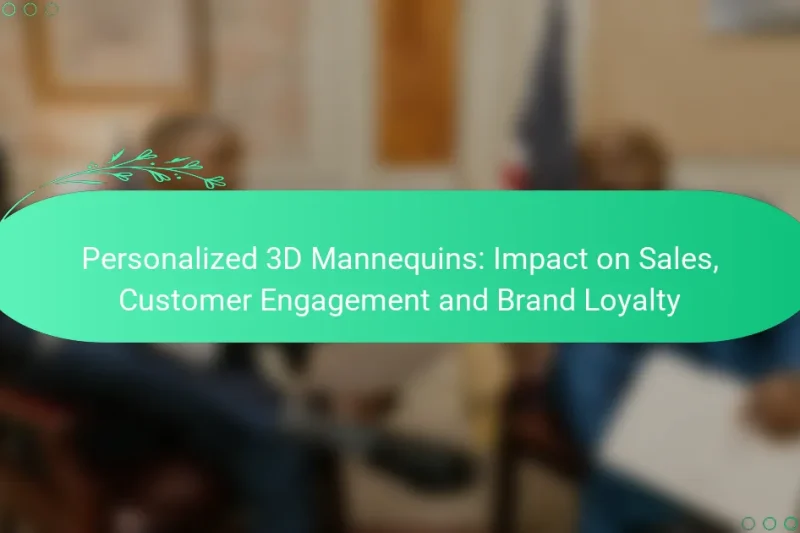In the competitive landscape of retail, successful customization of 3D mannequins plays a crucial role in … Successful Customization of 3D Mannequins: Case Studies, Strategies and OutcomesRead more
3D Mannequin Customization Options
3D mannequin customization offers a versatile array of features that enable users to personalize the mannequin’s appearance and pose according to specific requirements. With options for body shapes, poses, materials, skin tones, and sizes, you can create a mannequin that aligns perfectly with your brand’s identity and customer engagement strategies.
Customization Features for 3D Mannequins: Flexibility, Aesthetics and Functionality
Customization features play a crucial role in enhancing 3D mannequins for retail, enabling businesses to tailor … Customization Features for 3D Mannequins: Flexibility, Aesthetics and FunctionalityRead more
Custom 3D Mannequins: Brand Identity, Visual Appeal and Customer Perception
Custom 3D mannequins play a crucial role in enhancing brand identity by providing a distinctive visual … Custom 3D Mannequins: Brand Identity, Visual Appeal and Customer PerceptionRead more
Custom 3D Mannequin Solutions: Budgeting, Cost-Effectiveness and ROI
Custom 3D mannequin solutions offer businesses a cost-effective way to enhance visual merchandising while managing budgets … Custom 3D Mannequin Solutions: Budgeting, Cost-Effectiveness and ROIRead more
Customization Tools for 3D Mannequins: Features, Usability and Integration
Customization tools for 3D mannequins are essential for creating, modifying, and visualizing mannequins tailored to various … Customization Tools for 3D Mannequins: Features, Usability and IntegrationRead more
Custom 3D Mannequins: Selection Criteria, Style Options and Size Variability
Custom 3D mannequins are essential tools for retailers, blending advanced technology with diverse design options to … Custom 3D Mannequins: Selection Criteria, Style Options and Size VariabilityRead more
Personalized 3D Mannequins: Impact on Sales, Customer Engagement and Brand Loyalty
Personalized 3D mannequins are revolutionizing the retail landscape by creating tailored shopping experiences that resonate with … Personalized 3D Mannequins: Impact on Sales, Customer Engagement and Brand LoyaltyRead more
What are the best 3D mannequin customization options?
The best 3D mannequin customization options include a range of features that allow users to tailor the mannequin’s appearance and pose to meet specific needs. Key options encompass customizable body shapes, a variety of poses, material choices, skin tone selection, and size variations.
Customizable body shapes
Customizable body shapes enable users to select from a variety of figures that best represent their target demographic. Options typically range from slim to curvy, allowing for a more accurate portrayal of different body types. This flexibility is crucial for retailers aiming to showcase their clothing on diverse body shapes.
Variety of poses
A wide range of poses enhances the visual appeal of 3D mannequins, making them more engaging for customers. Users can choose from standing, sitting, or dynamic poses to better display garments. Selecting the right pose can significantly impact how products are perceived and can influence purchasing decisions.
Material choices
Material choices for 3D mannequins can vary from realistic to stylized finishes, including options like plastic, fiberglass, or even eco-friendly materials. Each material has its own advantages; for instance, fiberglass mannequins are durable and lightweight, while eco-friendly options appeal to environmentally conscious brands. Consider the intended use and display environment when making a selection.
Skin tone selection
Skin tone selection allows for a more personalized mannequin that reflects the diversity of potential customers. Options typically include a range of shades from light to dark, enabling brands to represent various ethnicities. This feature is particularly important for fashion retailers aiming to connect with a broader audience.
Size variations
Size variations in 3D mannequins are essential for accurately representing different clothing sizes. Mannequins can be found in standard sizes, as well as plus sizes, catering to a wider market. When choosing sizes, consider the target audience and the range of clothing being displayed to ensure inclusivity.
How to choose the right 3D mannequin for your business?
Choosing the right 3D mannequin involves understanding your target audience, display needs, and budget constraints. By carefully evaluating these factors, you can select a mannequin that effectively represents your brand and engages customers.
Assess your target audience
Identifying your target audience is crucial when selecting a 3D mannequin. Consider demographics such as age, gender, and lifestyle preferences to ensure the mannequin resonates with your customers. For instance, a fashion retailer targeting young adults may opt for a trendy, dynamic pose, while a formal wear store might choose a more classic stance.
Conducting surveys or analyzing customer data can provide insights into what styles and features appeal to your audience. This information will guide you in selecting a mannequin that enhances your brand’s image and attracts the right clientele.
Evaluate display needs
Your display needs will significantly influence the type of 3D mannequin you choose. Consider the space available in your store or online platform, as well as the types of products you will showcase. For example, if you sell clothing, a full-body mannequin may be ideal, while a half-body version might suffice for accessories.
Additionally, think about the mannequin’s pose and flexibility. A poseable mannequin can be adjusted to highlight various outfits or styles, providing versatility in your displays. Ensure that the mannequin complements your overall visual merchandising strategy.
Consider budget constraints
Budget constraints play a vital role in the selection of a 3D mannequin. Prices can vary widely based on materials, features, and customization options. Set a clear budget before you start shopping to narrow down your choices effectively.
Look for options that offer a balance between quality and cost. Investing in a durable mannequin may save money in the long run, as it will withstand wear and tear better than cheaper alternatives. Consider purchasing in bulk if you need multiple mannequins, as this can often lead to discounts.
What are the pricing ranges for 3D mannequin customization?
The pricing for 3D mannequin customization can vary significantly based on the complexity and features desired. Generally, costs can range from a few hundred to several thousand dollars, depending on the level of detail and customization options selected.
Basic customization costs
Basic customization typically includes simple adjustments such as changing colors, sizes, and basic features. Prices for these services usually start around $300 and can go up to $1,000. This range is suitable for businesses looking for standard mannequins without extensive modifications.
When considering basic customization, it’s essential to evaluate the specific needs of your project. For example, if you only require a change in clothing or skin tone, basic options will suffice and keep costs lower.
Premium features pricing
Premium features can include advanced options like realistic textures, intricate facial features, and specialized poses. These enhancements can significantly increase the price, often ranging from $1,000 to $5,000 or more. Businesses aiming for high-end displays or unique designs should budget accordingly.
Investing in premium features can enhance the visual appeal of your mannequins, making them more engaging for customers. However, ensure that the added cost aligns with your marketing goals and target audience.
Bulk order discounts
Many suppliers offer bulk order discounts for businesses purchasing multiple mannequins. Discounts can range from 10% to 30%, depending on the quantity ordered and the customization level. This can lead to significant savings for retailers or companies needing several mannequins for displays.
When planning a bulk order, communicate with suppliers to negotiate the best pricing and understand any limitations on customization options. It’s beneficial to compare offers from different vendors to maximize your savings while meeting your design needs.
What are the benefits of using 3D mannequins in retail?
3D mannequins offer numerous advantages in retail, enhancing the shopping experience and improving sales outcomes. They provide a dynamic way to showcase products, allowing customers to visualize items in a realistic context.
Enhanced customer engagement
3D mannequins captivate customers by creating interactive and immersive experiences. Retailers can customize these mannequins to reflect current trends, seasonal themes, or specific promotions, which draws shoppers’ attention and encourages exploration.
By incorporating technology such as augmented reality, customers can interact with mannequins through their smartphones, further enhancing engagement and making the shopping experience more enjoyable.
Improved product visualization
Using 3D mannequins allows customers to see products in a lifelike manner, which aids in decision-making. These mannequins can be tailored to display various sizes, colors, and styles, providing a comprehensive view of the merchandise.
For example, a clothing retailer can showcase outfits on 3D mannequins, giving customers a clearer idea of how the items fit together. This realistic representation can significantly influence purchasing decisions.
Increased sales conversion rates
Implementing 3D mannequins can lead to higher sales conversion rates as they effectively showcase products and attract customer interest. Retailers often see an increase in impulse buys when items are displayed on engaging mannequins.
Studies suggest that stores utilizing 3D mannequins can experience sales increases in the range of 10-30%. To maximize this benefit, retailers should ensure that the mannequins are strategically placed in high-traffic areas and regularly updated to reflect new inventory.
What are the prerequisites for 3D mannequin customization?
To customize a 3D mannequin effectively, you need access to suitable design software and a basic understanding of 3D modeling principles. Familiarity with the tools and techniques used in the software will significantly enhance your customization experience.
Understanding design software
Design software for 3D mannequin customization includes programs like Blender, Autodesk Maya, and 3ds Max. Each of these tools offers unique features, so selecting one that aligns with your skill level and project requirements is essential.
For beginners, Blender is often recommended due to its robust community support and extensive tutorials available online. More advanced users might prefer Autodesk Maya for its industry-standard capabilities, especially in animation and rendering.
When choosing software, consider factors such as cost, ease of use, and compatibility with other tools. Many programs offer free trials, allowing you to explore their functionalities before committing to a purchase.
